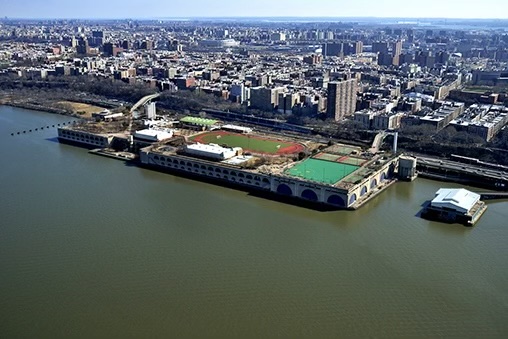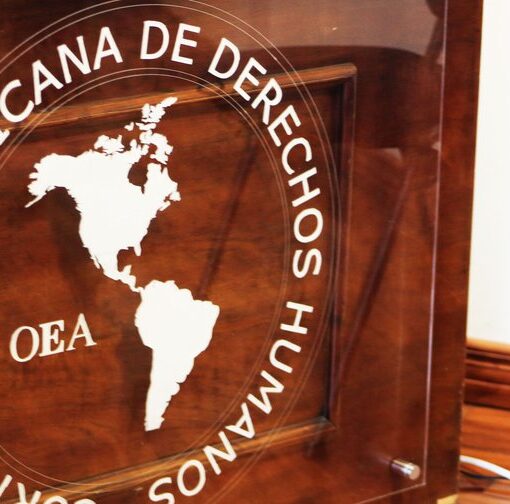
On August 14 the federal government released the United States’ first National Heat Strategy. As it stands today, the Strategy is a major step forward for coordinated federal action to recognize and address extreme heat and it confirms that agencies across the federal government are making this a high priority issue. But like all strategic plans, it is just a first step—implementing the high-level goals it outlines will require partnerships with other stakeholders, especially local governments, on the frontlines of climate adaptation. And for future updates, the Strategy itself could be improved by making those partnerships a central feature.
The National Heat Strategy
The Strategy is authored by the National Integrated Heat Health Information System (NIHHIS), an interagency initiative coordinating work across two dozen federal agencies and led by the Centers for Disease Control and the National Oceanic and Atmospheric Administration. The core components of the Strategy—each also broken down into dozens of sub-goals—are ambitious and far-reaching. They include (1) federally-led communication and education efforts to increase awareness of extreme heat and the risks and impacts it presents, (2) using federal agencies’ expertise and funding streams to support climate science that aims to better understand the drivers of extreme heat and the best ways to respond to it, (3) facilitating heat responses by international, national, and subnational partners, and (4) solidifying NIHHIS’s own role as a central hub for heat-related information and solutions.
At a high level, the Strategy’s strongest features are its recognition of the interconnectedness of the problems extreme heat creates and the solutions that could address it. The Strategy acknowledges, critically, that the built environment and the ecosystem it inhabits are intimately connected, that communities already economically disadvantaged are also frequently the ones hit hardest by heat, that responding typically requires coordination between federal, state, and local governments, and critically that increasing resilience to extreme heat brings with it year-round livability and comfort benefits.
The Strategy builds on range of actions responding to extreme heat that agencies have already taken or announced their plans to pursue. Recent guidance from the U.S. Department of Housing and Urban Development, for example, gives public housing authorities increased authority to define extreme heat conditions in locally meaningful ways and to lower the cost of cooling for public housing residents. A draft rule from the U.S. Occupational Safety and Health Administration would mandate certain worker protections during periods of extreme heat. And other current and planned federal actions include increased funding for assistance programs that help low-income households with cooling costs and publishing guidance on extreme heat risk for overseas agencies and their implementing partners. Adding this Strategy to the mix further confirms that these kinds of actions may well remain a priority area across government well into the future.
On the ground, heat mitigation projects have also been advanced through competitive federal grant programs. As one example, the recently-announced winners of Climate Pollution Reductions Grants (CPRG) made available by the Environmental Protection Agency (EPA) included several projects designed to mitigate extreme heat. Those projects include expanding urban forests, electrifying and weatherizing municipal buildings, and creating loan programs to facilitate investments that will lower the cost of cooling in response to extreme heat. Many other important projects were described in CPRG applications that were not funded, but as recently explained on this blog, those projects may be able to take advantage of various other federal support options.
Implementing and Expanding the Strategy
The National Heat Strategy has been rightly lauded as a cornerstone of future extreme heat management across the federal government. But there remains significant work to do to build the full structure required to effectively manage extreme heat. The suggestions below offer considerations that NIHHIS could weigh as it looks to implement the Strategy and as it contemplates future updates.
First, NIHHIS should develop a plan for regularly reviewing and updating the Strategy as new information becomes available and conditions change. The drivers of climate change and its impacts (in broad strokes) are well-understood; but the degree of risk in particular places, timelines for major climate shifts, and the possibility of compound, concurrent extreme weather events are all difficult to predict. Meanwhile responses to the changing climate are evolving all the time. As an example, the Inflation Reduction Act (IRA), for all its ubiquity in climate circles today, is only two years old. And the IRA’s future role could be vastly changed by the upcoming elections. A national heat strategy should be updated often to stay meaningful in the face of continuously shifting conditions and information.
Second, NIHHIS should explain crucial details about who exactly will implement the kinds of action it describes. The Strategy calls out the need for the federal government to provide “guidance, tools, and datasets to support community monitoring and assessment of heat risk,” to facilitate “place-based community support and capacity building to successfully implement high-impact, tailored heat resilience solutions,” and to engage “key stakeholders to plan, design, and demonstrate replicable, community-scale projects that . . . mitigate the impacts of extreme heat in low-income and disadvantaged communities.” In many instances state, local, tribal, and territorial governments will be those key stakeholders that turn the Strategy’s goals into concrete action—but their various roles and responsibilities are not well defined. So it is unclear what role they are expected to play in implementing the Strategy. If they are to play a meaningful role, structures will need to be put in place to facilitate cooperation and coordination both within and across different levels of government.
Third, building on a larger role for sub-national governments in crafting the Strategy, the goals should lay out what states and cities can do in partnership with the federal government. Cities around the United States are taking creative steps to implement (and encourage private parties to implement) effective, low-cost strategies like requiring cool roofs and green roofs, piloting new technologies to cool pavements, targeting tree plantings in historically disadvantaged areas, depaving hardscaped downtowns to invite back in urban meadows, among many other creative approaches. But not all of these actions are well-known and widely understood. A national strategy can draw on the federal government’s scale and expertise while also amplifying replicable local solutions already in place.
In sum: the new National Heat Strategy is an important first step toward coordinating action responding to extreme heat across the country. As it stands today, the Strategy demonstrates the scale of federal heat mitigation ambition and signals how its authoring agencies are thinking about extreme heat. But fully realizing the Strategy’s ambitious goals will take significant additional effort. Actions to implement the Strategy and its future iterations should bring partners from every level of government into the Strategy’s development and implementation to take full advantage of their unique capacity and insight.
Dan Metzger is a Senior Fellow with the Cities Climate Law Initiative at the Sabin Center for Climate Change Law at Columbia Law School.





